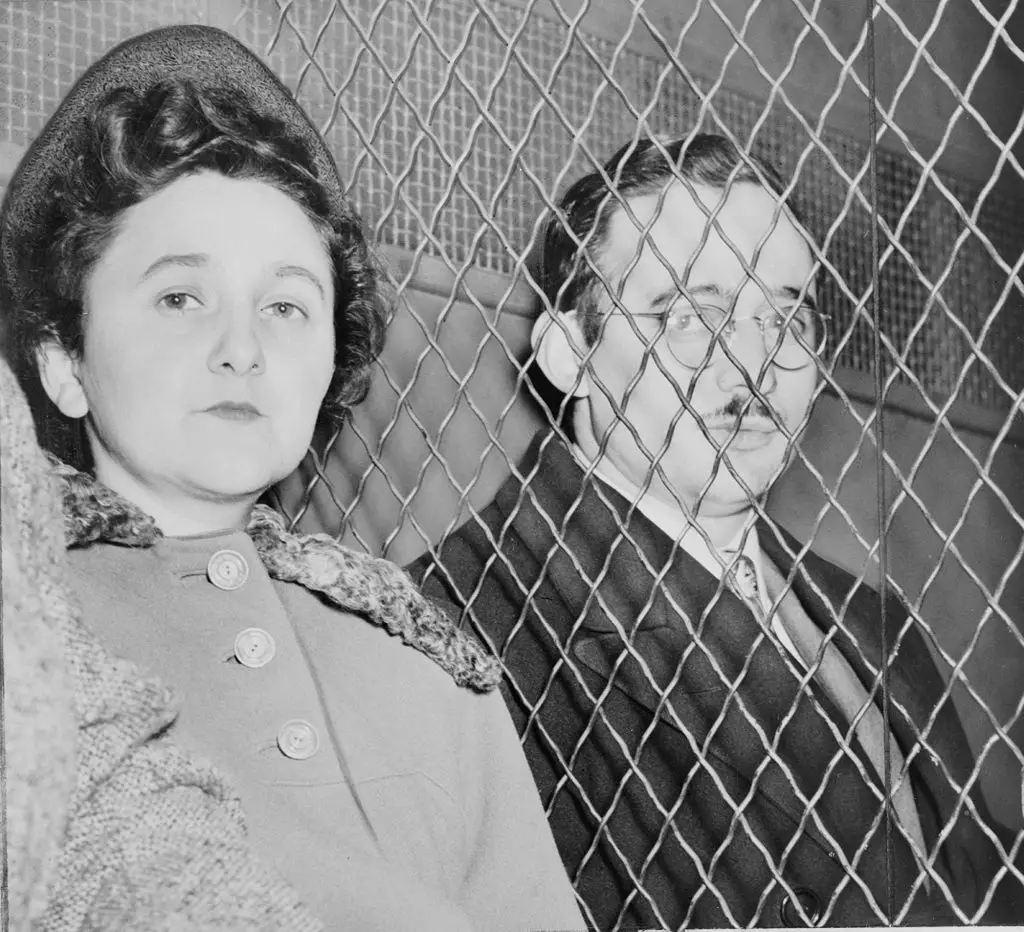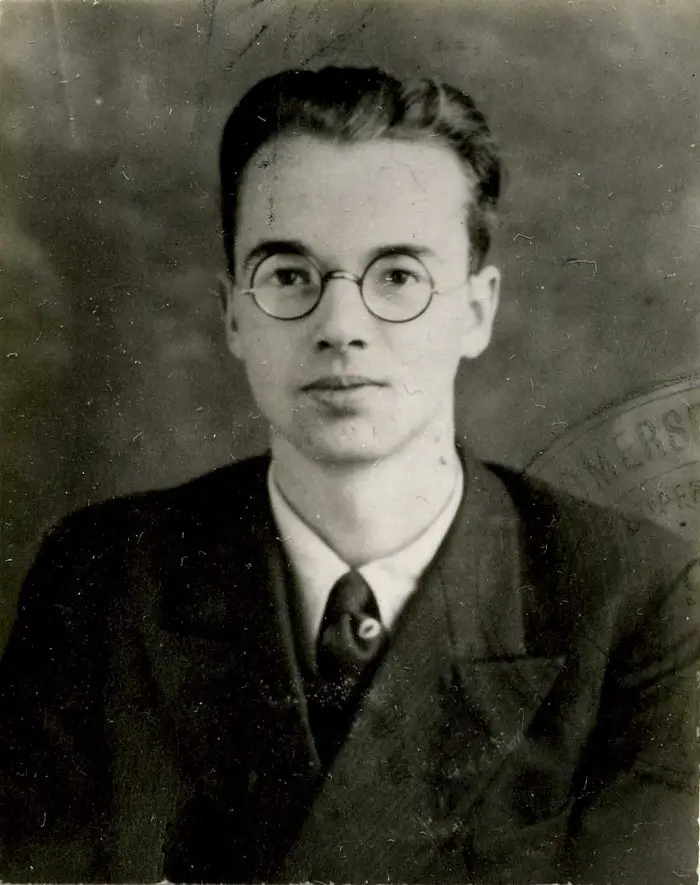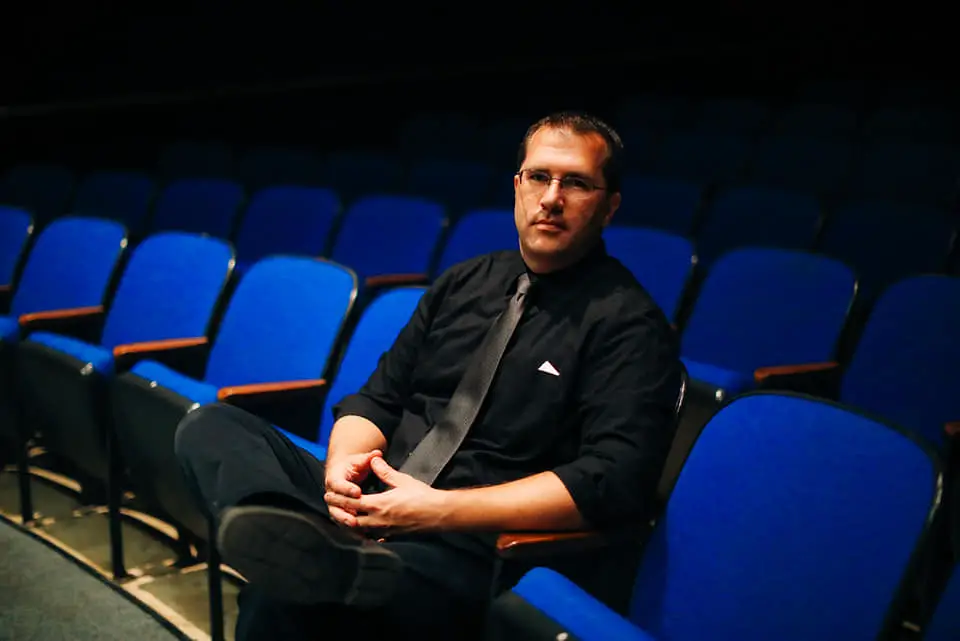 he Nuclear Age, quite possibly the most important paradigm shift in modern history, is said to have begun with the first successful test detonation of a nuclear device on July 16, 1945. It can trace its true origins, however, to Berlin in early 1939. It was there that the first breakthrough in the study of nuclear fission was made by German scientists. As word spread through the scientific community, scientists Albert Einstein and Leo Szilard wrote a letter to U.S. President Franklin D. Roosevelt explaining the gravity of the situation and the danger posed by this new discovery. Roosevelt then ordered a committee created to oversee research into uranium as an energy source and as a weapon [1].
he Nuclear Age, quite possibly the most important paradigm shift in modern history, is said to have begun with the first successful test detonation of a nuclear device on July 16, 1945. It can trace its true origins, however, to Berlin in early 1939. It was there that the first breakthrough in the study of nuclear fission was made by German scientists. As word spread through the scientific community, scientists Albert Einstein and Leo Szilard wrote a letter to U.S. President Franklin D. Roosevelt explaining the gravity of the situation and the danger posed by this new discovery. Roosevelt then ordered a committee created to oversee research into uranium as an energy source and as a weapon [1].
That research proceeded in secret, and in the weeks after Japan’s attack at Pearl Harbor, Roosevelt gave his approval to begin the secret Manhattan Project to design and build an atomic weapon[1]. The Soviets, though part of the Allied nations in World War II, badly wanted to steal every possible secret pertaining to the American and British militaries and their associated technology. Once they learned of the nuclear ambitions of both nations, they worked ceaselessly to penetrate those secret programs as well. The counterintelligence department of the Manhattan Project did everything it could to prevent the loss of secrets, hiding the details with great success from the Germans and Japanese, though somewhat less so with the Soviets. So, who were these spies, and what did they learn?
The Cambridge Five
This moniker refers to a group of five men recruited by the Soviets during or just after their studies at Cambridge University, in England, in the 1930s. Every one of them would go on to work in various levels of intelligence and government for the British, passing secrets to their handlers at every stop along their career paths. All five were active throughout World War II and were likely the source for Soviet leader Josef Stalin’s first confirmation that the British were beginning a nuclear program. This led to the Soviets’ intense efforts to penetrate the Manhattan Project through the recruitment, and use of various volunteers, in the United States and Britain[5].
Julius & Ethel Rosenberg, David Greenglass, Harry Gold

Julius and Ethel Rosenberg are perhaps the most famous spies from this era, mostly due to the uniqueness of a husband and wife team of spies, yet they never worked directly for the Manhattan Project. Instead, they were part of the cell within the spy ring that worked together to pass information to the Soviets. By this time, Julius Rosenberg, with the assistance of his wife, had already worked for years as a Soviet asset, passing along industrial information in his capacity as an engineer, and leading his own cell of similar agents across the country [2]. Thus, it was only natural that he would be involved in leaking these most massive secrets to his masters.
David Greenglass, a machinist who worked briefly at Oak Ridge Laboratory before he was transferred to Los Alamos, in 1944, was a devout Communist and also the brother of Ethel Rosenberg. In his capacity with the project, Greenglass made drawings of the bomb which showed the inner workings of the device. He used his wife, Ruth Greenglass, to pass these drawings along to Ethel and Julius, who transferred the information to the Soviets. Greenglass remained undetected until 1950 when his handler Harry Gold became known to the Federal Bureau of Investigation (FBI). Under interrogation, Gold gave up David Greenglass as his agent, at which time Greenglass flipped on the Rosenbergs in order to spare his wife from punishment[2].
Julius and Ethel were subsequently arrested but never admitted to any spying or illegal activities. They refused to answer questions from authorities, maintained that they were innocent, and never shared the names of other people in their spy ring or within the Manhattan Project. They were convicted of conspiracy in 1951 and executed by electric chair in June of 1953 [2]. Greenglass received fifteen years and his wife was not charged, as a reward for their cooperation in the case against the Rosenbergs.
VENONA intercepts
One of the most important developments in the United States government’s assault against spies in the Manhattan Project was the decryption of telegraph messages which were the means of communication between spies and their Soviet handlers. These telegraph ‘cables’ were encrypted with one time pads, which should have been an unbreakable coding system. Fortunately for the Americans, a mistake in the Soviet encoding procedure allowed some of the messages to be decrypted [3]. The Army Signal Intelligence Service began working to decode these messages in 1943, and by 1946 were starting to show the fruits of their labor. These decrypted messages were code-named the VENONA intercepts, and despite the fact that they were years old by the time they were decrypted, the messages revealed spies that had gone undetected to that point [3].
Klaus Fuchs

Known worldwide as the most important atomic spy in history [5], Fuchs was a German-born scientist who fled to Britain at the beginning of World War II. He volunteered his services to the Soviets in 1941 and began an illustrious career of spying while working as a scientist in the British nuclear program. In 1944, Fuchs was part of a British mission that crossed the Atlantic to join the ranks of scientists at the Los Alamos lab[5].
At Los Alamos, Fuchs’ training allowed him to understand and interpret the information he worked on, knowing exactly what the Soviets needed most for their efforts. He passed along detailed drawings of the bomb’s design, along with information on many of the most complicated processes for creating nuclear fission detonations and the various chemical processes thereby involved [4].
In 1946, Fuchs returned to Britain where he continued to work in the atomic program and pass those secrets on to his Soviet masters. By 1950, with the help of the VENONA intercepts, American and British counterintelligence operatives had enough to confront and arrest Fuchs [2]. He eventually confessed to everything and was sentenced to fourteen years imprisonment, though he managed to escape the more serious charge of espionage against him, due to the Soviets technically being an ally of the British at the time of his activities [4].
Theodore Hall
As far as the public knew, Fuchs was the only spy in such a lofty position at Los Alamos. When the VENONA intercepts were declassified in 1995, however, it was revealed that a second physicist, Theodore Hall, was known to be in the employ of the Soviets as well [3]. Hall was the youngest physicist working on the project, at the time just nineteen years old and already a Harvard graduate. In 1944, Hall had contacted the Soviets, volunteering to give them secrets from his work at Los Alamos. He would go on to give them details about the implosion mechanics of the bomb and information on plutonium enrichment as well [3,4].
When FBI agents caught up with Hall in the early 1950s, thanks to information garnered in the VENONA intercepts, he refused to admit to any wrongdoing. No one else who had been arrested by the Americans had been able to identify Hall as a part of the spy ring, which left them with only the intercepts as proof of Hall’s misdeeds. The government considered the classified VENONA project much too important to disclose in open court, so Hall was never charged with any crimes. Once the declassification revealed his role in the spying, Hall explained that he did what he did to keep the Americans from having a monopoly on the bomb, saying it was too dangerous to be in just one nation’s hands.
So, the question waiting to be asked is just what did the Soviets gain from all their espionage? They were able to design and test their first nuclear device in 1949, much sooner than the Americans and British guessed they would achieve that feat [5]. The main constraint for the Soviets, outside of simple shortages of talent and brainpower, was a shortage of uranium ore available to them to create the bombs themselves. The Americans had gotten most of theirs from a mine in the Democratic Republic of the Congo, but it took several more years for the Russians to discover and mine the uranium needed from deposits in countries throughout their territory.
It’s safe to say that the information garnered from the Los Alamos spies allowed them to leap over their own discovery of several important steps of the process, likely saving them one or two years in the end. In August of 1949, they tested their very first nuclear device, a virtual copy of the “Fat Man” design the Americans had detonated at Nagasaki. After that, the world would never be the same.
Sources:
[1]. U.S. Department of Energy. “The Manhattan Project — An Interactive History — Early Government Support”
[2]. U.S. Department of Energy. “The Manhattan Project — An Interactive History — Espionage and the Manhattan Project”
[3]. U.S. Department of Energy. “The Manhattan Project — An Interactive History — The VENONA Intercepts”
[4]. Wikipedia. “Atomic Spies”
[5]. Holmes, Marian Smith (April 9, 2009). Smithsonian Magazine: “Spies Who Spilled Atomic Bomb Secrets”

Entrepreneur, writer, editor, lover of history, gaming, and more topics than I have time to explore.





